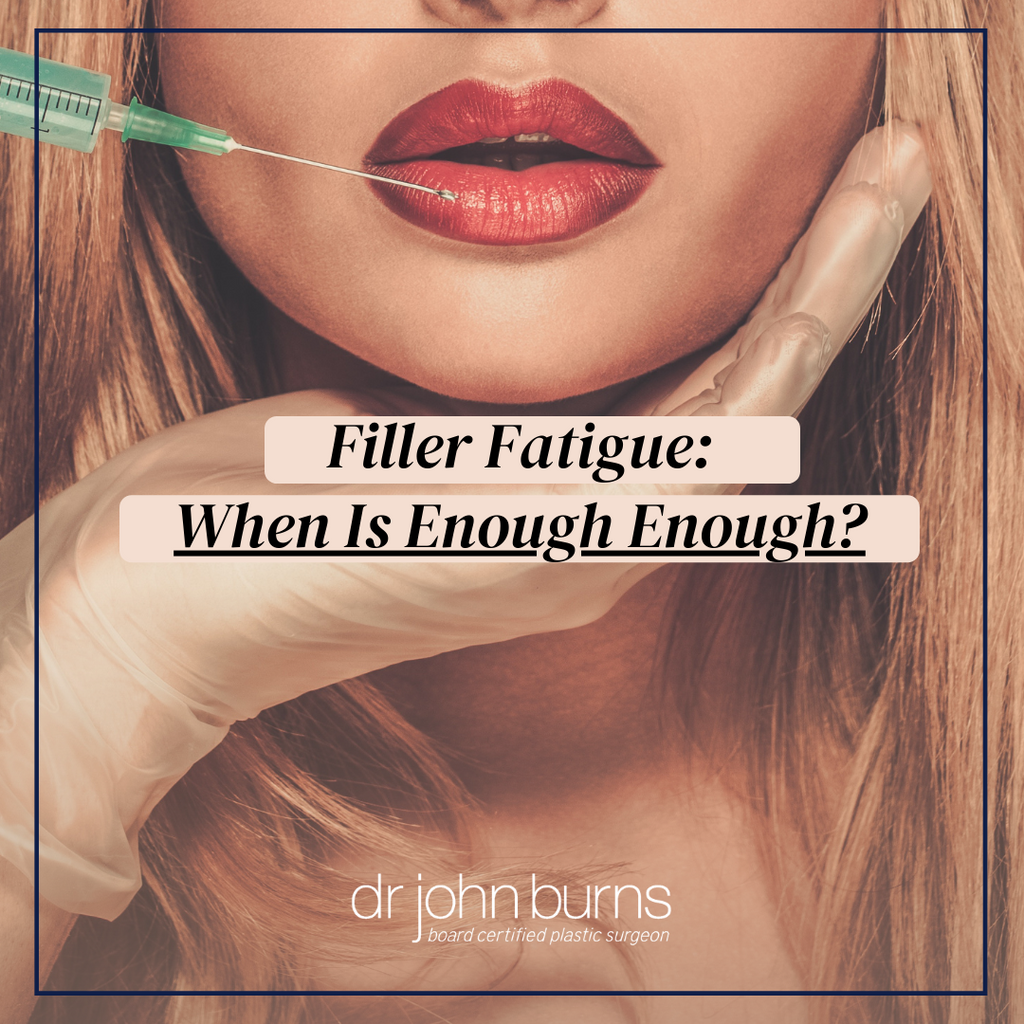
You don't have to make a lengthy search on Google or social media to see just how popular dermal fillers have become. In 2020 alone, ASPS reported soft tissue fillers as the second most popular minimally invasive cosmetic procedure, with over 3.4 million documented procedures. (Botox took first place at 4.4 million.)
Why Fillers, Though?
Social media focus on nonsurgical rejuvenation partnered with the growing self-awareness of our looks has caused a shift in the rejuvenation paradigm, and new-to-filler patients are becoming younger and younger with each passing year. Plastic surgeons are also seeing patients in their 30s-60s who started injections at a younger age and are continuing to use neuromodulators like Botox Cosmetic® and Dysport® along with dermal fillers to treat facial aging without surgery.
You might be asking why. Well, mainly because hyaluronic acid dermal injections are temporary fillers, so if a patient doesn't love their look, they can rest assured knowing it will disappear over time. And because HA fillers aren't permanent, maintenance is necessary. Before we dive into the filler fatigue phenomenon, let's review where patients are getting dermal filler injected on their face-
Where Do People Get Filler Injected?
Unlike neuromodulators that last about 3-4 months, injectable fillers can last up to 24 months. Common areas for facial fillers are the temples, lower eyelids (tear troughs), cheeks (cheek "pop"), nasolabial folds (smile lines), marionette lines (puppet's mouth), and lips. But keep an open mind here, ultimately patients can have dermal fillers injected virtually anywhere they're experiencing volume loss or wanting to enhance a feature of their face IF their injector knows what they're doing. But that's also where we run into problems with fillers. This is where filler fatigue comes in.
Filler Fatigue: Too much, Too Soon
Celebrities and culture influencers are driving trends like "Russian Lips" and exaggerated "Ogee" cheek curves, sometimes beyond what is anatomically normal. Filler fatigue occurs as patients push the boundaries of what is possible with filling and begin to distort their normal facial features.
Some common causes of filler fatigue are:
- Unattainable expectations: Social media-fueled expectations of what is possible with fillers create an expectation that fillers can accomplish more than is possible. Eager novice injectors who don't know how to say "no" to their patients end up overusing filler, causing an unnatural, pillow-face look.
- Effect of gravity: Gravity is a constant and unyielding force that pulls soft tissue AND filler over time. Both filler and the surrounding soft tissue will be negatively influenced by gravity. You've probably seen this manifest as skin laxity mixed with a dough-faced appearance where cheek filler and jawline filler have been injected. In fact, skin elasticity can be permanently harmed by overfilling, causing more skin sag!
- Increased frequency: Injecting fillers or neuromodulators too frequently will gradually distort normal anatomy oftentimes stretching out or harming natural soft tissue.
- Unqualified providers can misuse fillers or use the wrong fillers for a particular indication. Thus, it's best to have a board-certified plastic surgeon who understands facial anatomy select the right type of filler for injection placement so that results are refreshed and natural.
Should I Keep Doing Dermal Fillers?
In most cases, filler fatigue typically occurs when the amount of product continues to increase to achieve or maintain desired results. This usually occurs in the late 40s or early 50s when the facial aging process exceeds what can be treated with filler. This usually coincides with the realization that repeated treatments won't yield the desired results that once were possible. When this occurs, facial plastic surgery procedures, like a facelift or facial fat transfer should be considered to achieve natural, longer-lasting benefits.
It is also important to recognize that are multiple approaches to treating facial aging, from laser skin therapy, to medical-grade skincare, nutrition, hydration, avoiding sun and smoking, and cosmetic surgery all play a role in natural-looking facial rejuvenation.
Fillers are designed for modest and elegant improvements. If you find yourself constantly needing tweaks or adding filler to achieve a relatively "average" result, then it may be time to consider a face or neck lift, brow lift, or eyelid rejuvenation. A well-done facelift will look natural with distorting your normal facial features.
Related Posts:
Radiesse Plus: Jawline Filler That Lasts
Dr. John L. Burns Jr. MD, FACS is board-certified by the American Board of Plastic Surgery and President of the Dallas Plastic Surgery Institute, one of the largest plastic surgery group practices in the United States. Dr. Burns also serves as Medical Director at the EpiCentre Skin Care and Laser Center, Dallas' Premier Medical Spa. Dr. Burns dedicates his practice to aesthetic or cosmetic plastic surgery. Call (214) 515-0002 or email Info@DrJohnBurns.com to schedule a complimentary consult with Dr. Burns.
